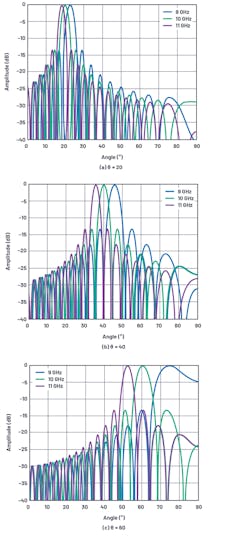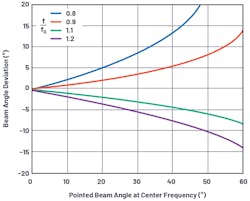Download this article in PDF format.
Wireless is everywhere these days. What new electronic product doesn’t have a wireless or a radio-frequency (RF) component today? Chances are you could be designing something that incorporates an RF capability right now. As usual, you probably needed it yesterday and your specialty may not be RF. Well, there’s a way to solve this problem.
First, find a vendor to work with that not only can supply the components you need, but also provide design assistance, extensive documentation, formal instruction, and the components to support it. One company who can address those qualifications is NXP and its distributor Digi-Key.
Sponsored Resources:
- NXP RF – 5G Wireless Infrastructure for a Connected World
- RF Power LDMOS Transistors. High Ruggedness N-Channel Enhancement-Mode Lateral MOSFETs
RF Circuit Design
Many if not most RF products require power amplification. Some examples are equipment for 5G cellular infrastructure, industrial, scientific, and medical (ISM) specialties, VHF two-way radio and broadcast TV, and a wide range of aerospace and defense use cases. That usually means designing an RF power amplifier from scratch. This is often tricky, time-consuming work.
Instead of trying to reinvent the wheel, why not use one of many proven designs? NXP offers a collection of over 400 RF power-amplifier designs that are readily accessible. I’m not making this up. With 400 circuits available, you can surely find one that fits your needs.
In addition to that resource, NXP provides the semiconductor components to make these amplifiers, as well as extensive documentation and helpful design assistance. This offering should help ease your design workload and expedite time-to-market. With a single click, you can easily access this entire suite of design files. You just might beat your deadline.
Called the NXP RF Circuit Collection, this asset offers evaluation boards with full documentation, design layout reference files, and a way to order fully assembled boards. The amplifier designs available cover the 1.8-MHz to 3.8-GHz frequency range and with a power output range from 10 dBm to 1800 W. A full set of design support tools gets you started fast and makes it possible to finish on time.
Some Examples
One of NXP’s most popular RF products is the MRF300AN MOSFET. This laterally diffused MOS enhancement-mode device can develop up to 300 W of CW power in the range of 1.8 to 250 MHz using a 50-V supply. Some common frequencies of operation are the popular 13.56-MHz industrial equipment frequency and its harmonics of 40.68 MHz and 81.36 MHz, TV broadcast channels, and mobile radio. The gain range is 20 to 28 dB and efficiencies run from about 73 to 80%. The device comes in a TO-247 package.
One of the fastest growing new products is the NXP AFSC5G35D37 power-amplifier module (Fig. 1). With its fully integrated Doherty amplifier, the module targets the cellular infrastructure. The high-power linear amplifier can be used in LTE and 5G systems such as outdoor small cells, remote radio heads, and those new and massive multiple-input multiple-output (MIMO) systems.
This device covers the 3400- to 3600-MHz band, a recent new frequency assignment. It offers a gain of 29 dB with up to 5 W output. Typical efficiency is 39%, a good rating for a class AB linear amplifier. Input and output are fully matched for 50 Ω. The device is housed in a 6- × 10-mm surface-mount package.
One application for this module involves the formation of an amplifier that can serve the 5G market. For instance, it’s useful in a massive MIMO antenna system. Figure 2 shows one variation—the NXP Airfast.
A Major Source of RF Expertise
Few companies have the broad experience in RF products as does NXP. The company’s initial products were discrete RF power transistors. It still maintains an extensive offering of individual RF power transistors and bipolar, LDMOS, and GaN power devices for the latest designs. This expertise led to a focused line of RF ICs covering most of the spectrum.
Subsequently, its multichip modules came along offering complete solutions.
Today with so much 5G product development, engineers need an experienced RF supplier who offers you not only existing and retro devices, but the more advanced products as well. The NXP Airfast 5G, for example, includes a two-stage LDMOS final power stage matched to 50 Ω and a Doherty configuration. Other products feature a three-stage gallium-arsenide (GaAs) pre-driver product and a GaAs LNA receiver module with a switch. With such a broad line of products, you can design and build almost any RF equipment.
Sponsored Resources:



